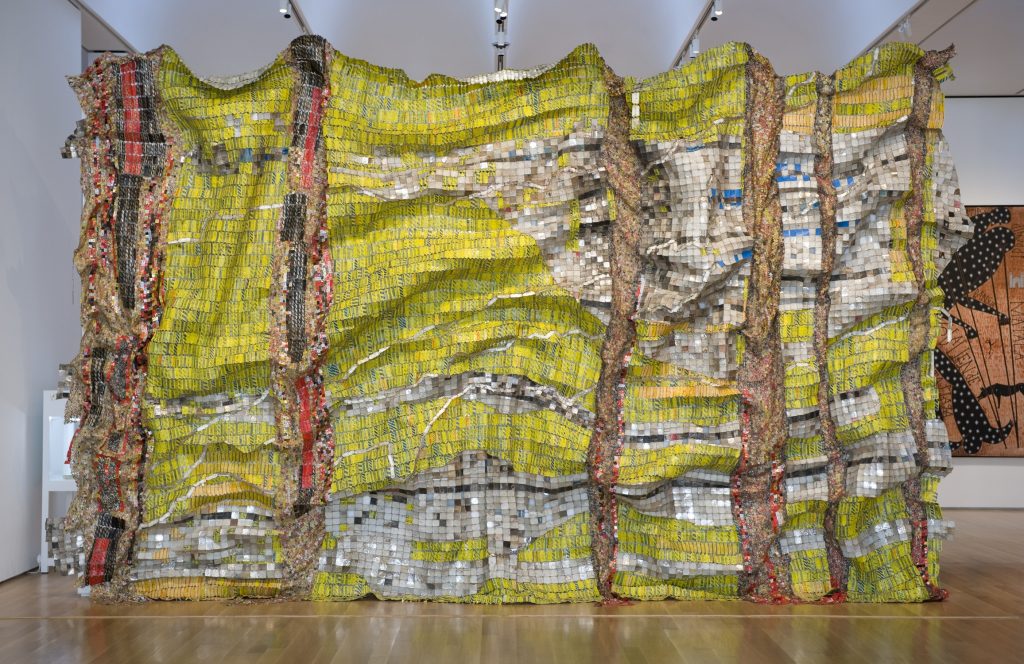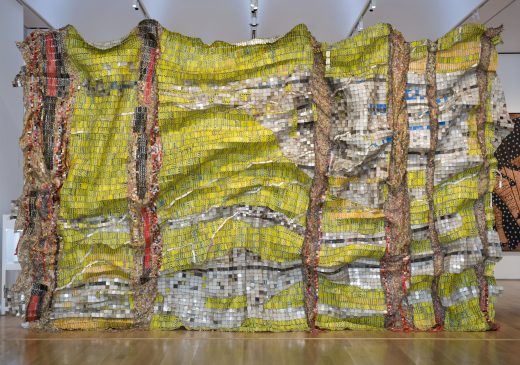El Anatsui (artist)
El Anatsui was born in Ghana in 1944, and has for many years resided in Nsukka, Nigeria, where he has taught...
view artistArtists will explore the process of weaving through observation and movement. They will create a woven fabric square using a variety of textiles and “found” materials. Artists’ fabric weavings will be linked together to create a collaborative fabric wall hanging.

Lines That Link Humanity, by El Anatsui
Preparation
Introduction/ Warm-Up
Focus Activity Procedure
Closing
Written by Amy Keenan Amago
Vocabulary
weave
pattern
overlap
over/under
textile/fabric
found objects
Materials
Extension Activities for Teachers
• Invite students to use construction paper or paper from the recycling bin to create a paper weaving.
Extension Activities for Families
• With your families, identify objects at home that were woven (i.e. rugs, tapestries, pot holders, etc.)
• Tear up an old pillowcase or tee shirt or use rubber bands or strips of newspapers to make a found object weaving at home.
Suggested Books for Classroom Library
Barnett, Mac. Extra Yarn. Balzer and Bray, 2012. [ISBN 978-0-06195-338-5]
Blood, Charles. The Goat in the Rug. Aladdin, 1990. [ISBN 978-0-68971-418-4]
Castaneda, Omar S. Abuela’s Weave. Lee and Low Books, 1995. [ISBN 978-1-88000-020-5]
Churchill, Ginger. Wild Rose’s Weaving. Tanglewood Press, 2011. [ISBN 978-1-93371-856-9]
dePaola, Tomie. Charlie Needs a New Cloak. Aladdin, 1982. [ISBN 978-0-67166-467-1]
Lyon, George Ella. Weaving the Rainbow. Simon and Schuster, 2004. [ISBN 978-0-68985-169-8]
El Anatsui was born in Ghana in 1944, and has for many years resided in Nsukka, Nigeria, where he has taught...
view artistIn this lesson, students will observe how artists can creatively transform materials. Students will create...
view lesson plan